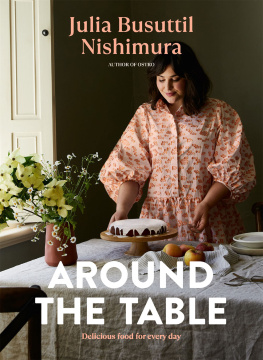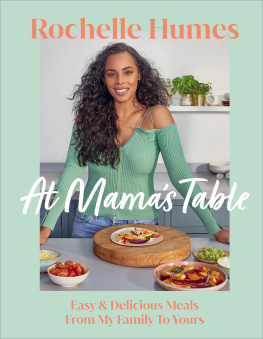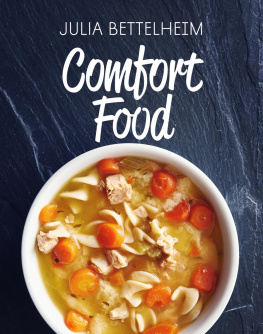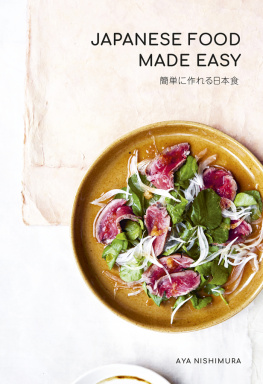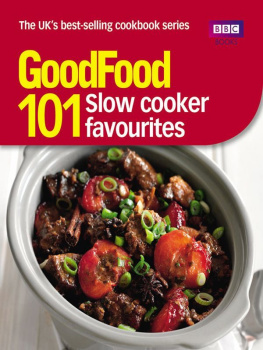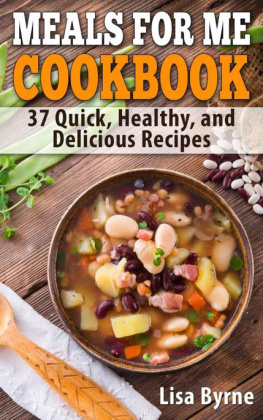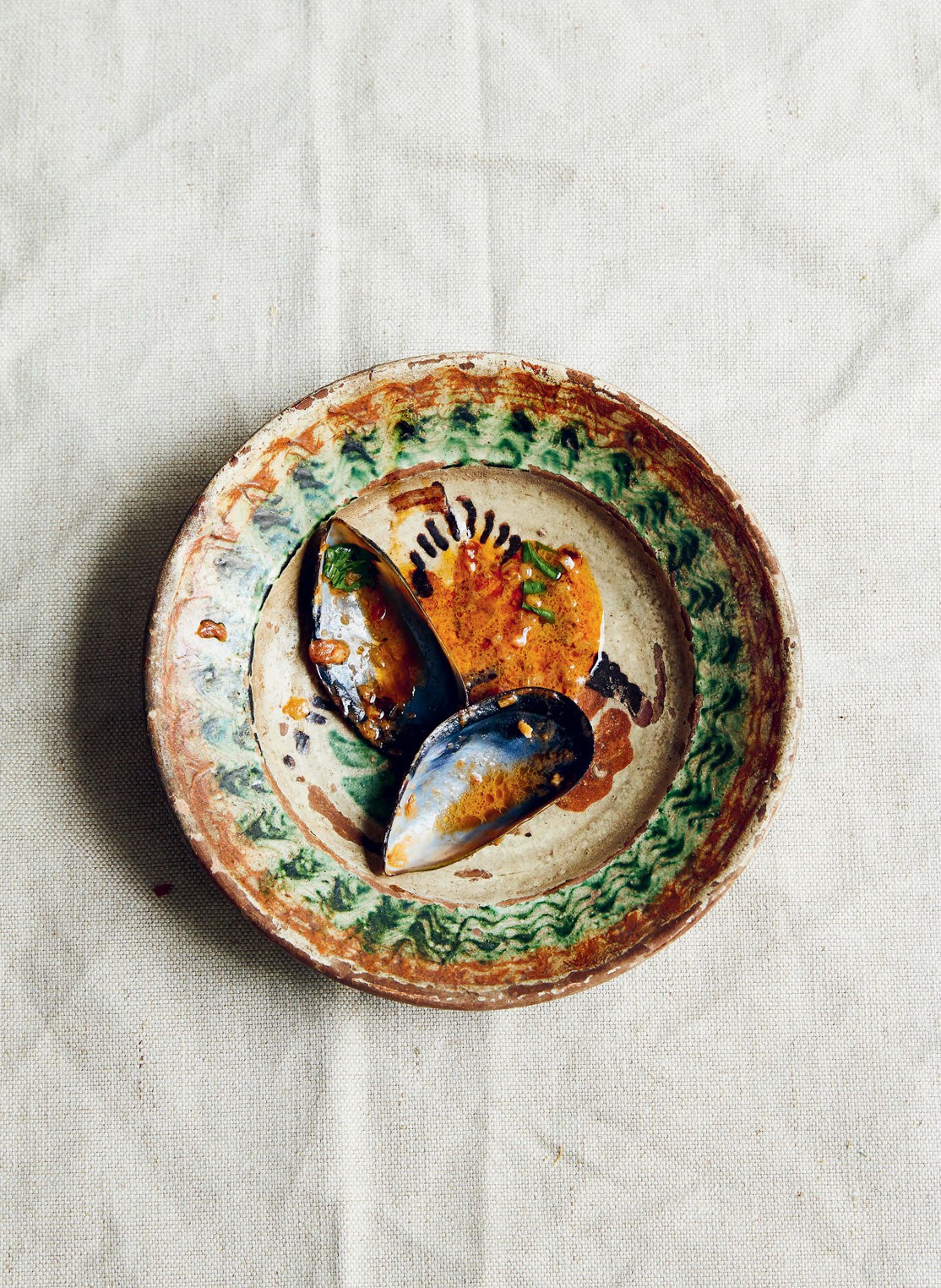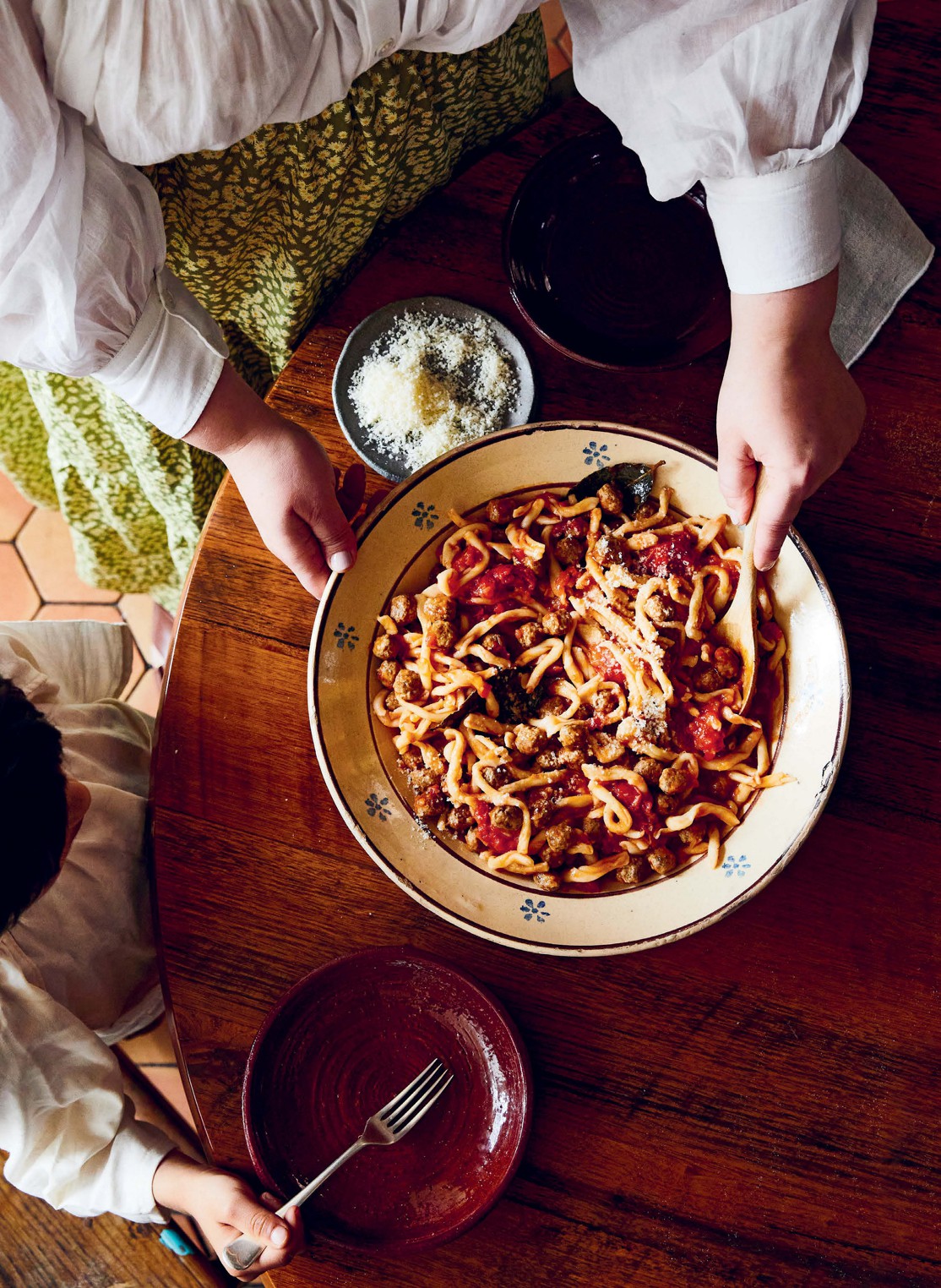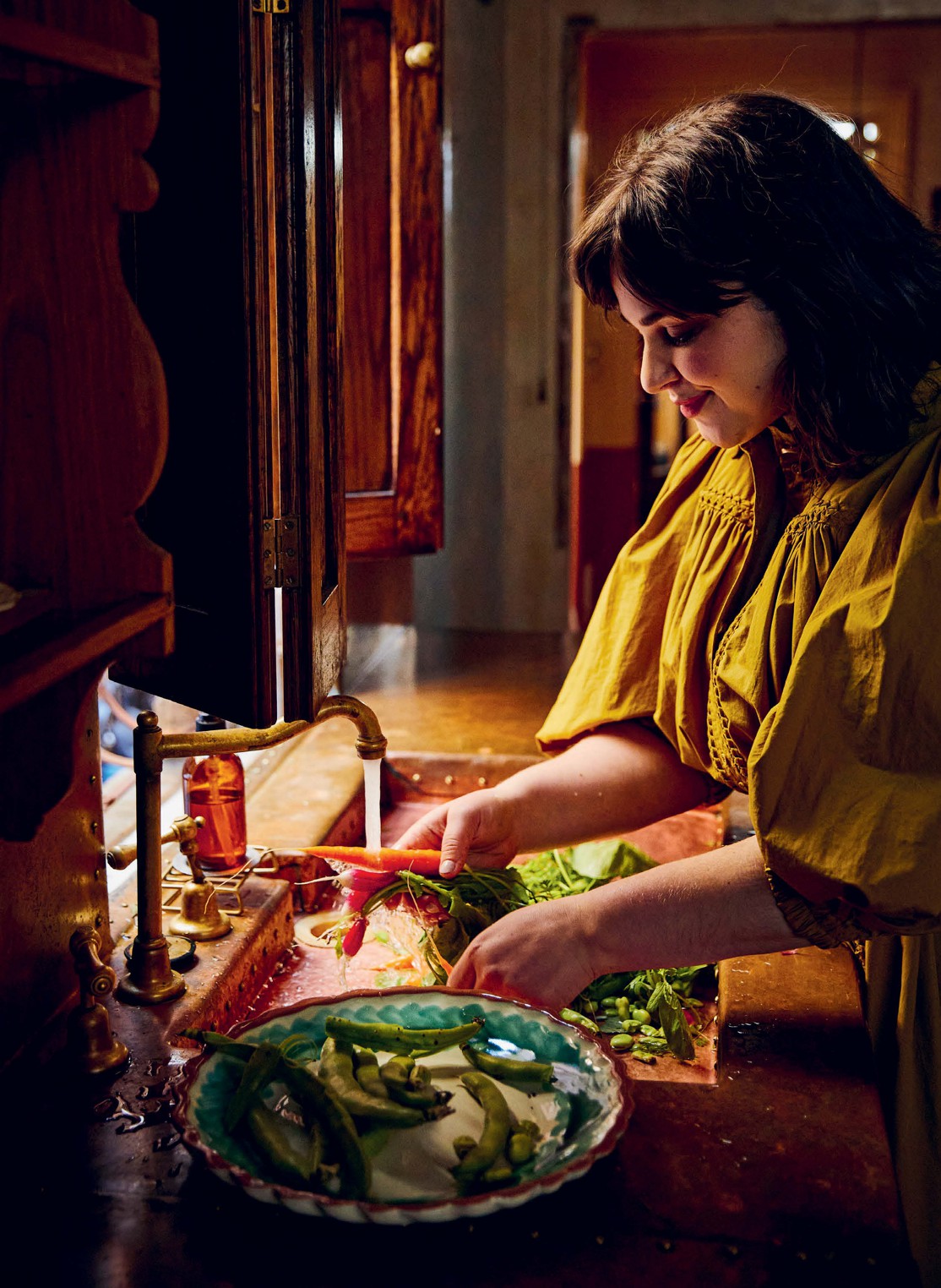
Around the Ta ble encapsulates how I think about foo d. While the seas ons always underpin my choices at the market and in the kitchen, I am also ver y mu ch guided by mood, fee lings and memories. I have the fondes t memory from the last tim e I was in Rome. I was sitting outs ide with a friend at a restaura nt in the Jewish Quarte r; t he surroundin g walls dus ky peach and covere d in ivy . Our little whit e linencovered table dappled with light th at streamed t hrough betwe en the large, white umbrellas. W e a te carciofi alla giudia (RomanJewish a rticho kes), spaghett i alla carbonara and tiny Alpine stra wberries with lemon and sugar , serve d in small decora tive glass bo wls. The foo d was certainl y delicious, but it is the feel ing of that moment th at has remain ed. Then there is the scen t of shoku pan baking and the memories it brings . If I close my eyes, I am standing in T o kyo early in the morn ing. I can see the baker unloading t he ovens at our fa vourite bakery . They shake t he hot loaves fro m the perf ectly oblong tins , queues already forming outside. Or Im in Nagoya , where a smoky kissaten (coee sh op) is serv ing thickly sliced and toas ted shoku pan with a black coee and a b oiled egg, or si tting on the Shinkansen (bullet trai n) with an eg g sando balancing on the tr ay table, bought in a hurry from a tra in-station bake ry . Then there are sto ries of my husband Nori s father orderin g loaves of sh okupan by ma il, to be delivered to their stra wberry farm in the country side. His mum deep -fry ing the crusts and r olling them in cinnamon su gar sweet rusks for afters. When I bake my o wn shoku pan at home, it is of course delicious fl uy bread, but it also ev okes memories of Nori s childhood and our tra vels toget her. A midweek meal thro wn toget her to feed hungr y mou ths, a bowl of warm ing soup on a cold day or a quick refresh ing salad when it s too hot to cook . Ev en the simplest things, over time, att ach themselves to memori es and feelings, which only get stro nger as you come around the table, da y after day . Ive alwa ys loved finding the sm all joys in eve n smaller tasks : rolling meatbal ls, one by one ; or rubbing butt er into flour and th inking of nothing else in tha t moment. And it s the little thing s that often giv e me the greates t pleasure: eating roasted fruit, still warm , with double cream; the clinking of vongole in the pan as you sha ke them with spaghet ti; a sl ice of homemade cake with co ee; the first peach of the season and the la st tomato bef ore the weather t urns cold. Something as simple as bre ad with tomato pas te and olive oil can connect you to genera tions and genera tions of family w ho have eaten the same thing bef ore you. I love feasting with fr iends, the pleas ure that co mes from shari ng a meal is wonderf ul. It lift s the spirits and connec ts us to each other . But there is al so strong meri t in taking time just for yourself . A bowl of udon noodle s is perhaps one o f my favouri te solo meals comfort ing, nourishing and usually not too much eort . I have al so been known to stir a risot to for one mor e a mindfulness practice th an anyt hing else. And then there are things which can be made and stored w ell: a pie , to be cut into as needed; or gyoza, made en ma sse and then froze n, allowing me to pull sever al out at a time when I get a cr aving. There are days when I dont feel like cookin g, especia lly if it s just for myself. But, I am alwa ys rewa rded when I do, and I gener ally alw ays do. Even if it is simply folde d eggs on butter ed toast. Happily , the rewar d is the food, but then there is also t he feeling that I am taki ng care of myself . Cooking i s an act of care , too. An introduction

I began to w rite thi s book in the same wa y that I alwa ys do, with a list of recipes that I love to coo k for myself, my family and friends. The list steadily gro ws and recedes and grows again ov er the months as I re- evaluate and refine. A s the wr iting drew to a c lose, it bec ame clear that there were defining themes circling around th e recipes. Some were obvious, others woven more s ubtly , but still all there. I adore thinking about fo od like this. It feels libera ting to eat with your mood and whim, all punctu ated by seasonal produce. There are fourt een chapters in tot al, with recipe s grouped in wa ys that make sense to me and I hope to you, too. Some wo rk very well as complete men us, such as Summer Feasting and Heading Indoors. Ot hers are collections c entred arou nd mood and themes : Small Jo ys, Cakes for Coee and Into the Med. There are simple ideas f or the middle of the week in W ee knight Saviours and ot hers that require a litt le more time, but are by no means diicul t. The food in Slow Sundays i s for any day when you have time and s pace to spend just pottering around the house, co oking, reading, re laxing. For me, this day is oft en a Sunday . There is food for t he coldest days o f the year , the first sign of blos soms and every thing in between. No matter w hat goes on aro und us, the seasons k eep changing: summ er s tomatoes are replaced by pumpkins, which make wa y for parsnips and cabbages. Then come the greens: peas, green b eans, aspara gus, art ichokes and new salad lea ves. While the reci pes are grouped together in these cha pters, there are no rules, so pleas e do not feel restraine d by the wa y the recipes are ordered. In fact , ta ke this as perm ission to do with them a s you wish. It is your food to enjoy af ter all. I hope that wha tever you coo k from this book , i t encourages you to see ever y mea l around the table as something w orth celebrati ng, no matt er how small or simple that meal may be . And then again, you may simply just be looking fo r a really delicious cake or a reliable one-p an meal to quickly assemble. At the most basic level, i t is all lovely generous food to satisfy your hunger . I hope among these 100 re cipes, you find all of these things and more. About this book

